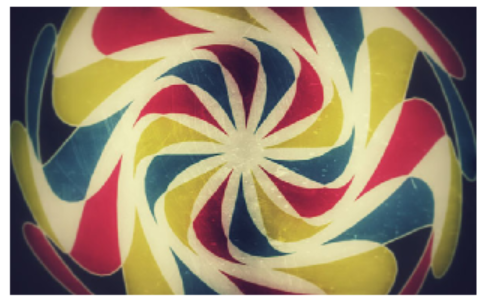Module 7: Circular Functions (Chapter 7)
Section outline
-
 Musical
instruments produce sound by the vibration of a string on a violin,
guitar, or piano, or a column of air in a brass or woodwind instrument.
The vibration causes a periodic variation in air pressure that is heard
as sound. Periodic vibrations create a pleasing, musical sound, while
random vibrations sound like noise. There are three distinguishing characteristics of musical notes: loudness, pitch, and timbre.
Musical
instruments produce sound by the vibration of a string on a violin,
guitar, or piano, or a column of air in a brass or woodwind instrument.
The vibration causes a periodic variation in air pressure that is heard
as sound. Periodic vibrations create a pleasing, musical sound, while
random vibrations sound like noise. There are three distinguishing characteristics of musical notes: loudness, pitch, and timbre.- The loudness of a note is measured by the magnitude, or amplitude, of the changes in air pressure.
- The timbre of the note allows us to tell a piano note from a guitar note with the same loudness and pitch.
- The pitch of the note is determined by its frequency, the number of times its basic pattern is repeated each second. For example, a note with pitch 440 hertz repeats its pattern 440 times per second. Humans can hear frequencies that range roughly from 20 to 18,000 hertz.
The simplest pressure vibration is produced by a tuning fork. The graph of its pressure function resembles a sine curve, and the corresponding sound is called a pure tone. When a musical instrument produces a pure tone, not only is its frequency produced, but integer multiples of the fundamental frequency, called harmonics, are produced as well. Sine curves of different frequencies combine to create the timbre of the note. If two musical instruments play the same note, the notes have the same pitch, but they sound different because the amplitudes of each of the harmonics is different for the two instruments.The French mathematician Joseph Fourier, who lived from 1768 to 1830, discovered that any periodic wave can be written as the sum of a number of sines and cosines with differing amplitudes. Fourier created a method for determining the frequencies and amplitudes of the simpler waves that make up a more complicated periodic function. Applying the Fourier transform to a sampled musical note reveals which component frequencies are present in the note. The same sound can then be re-synthesized by including those frequency components. Today, Fourier analysis is the foundation of signal processing, not only for audio waves, but for radio waves, light waves, seismic waves, and even images. By analyzing a compound waveform, the "noise" components can be isolated and removed in order to smooth out the signal. Fourier analysis is also used in X-ray crystallography to reconstruct a crystal structure from its diffraction pattern, and in nuclear magnetic resonance spectroscopy to determine the mass of ions from the frequency of their motion in a magnetic field.Image Caption: Fourier Art also allows you to create beautiful animations by smoothly changing the Fourier coefficients of a curve. This change can be uniform for all the coefficients or modeled by a specific function for each one of them, which offers a great potential for expression. (credit: https://www.fourierart.com/)(Content & Image Source: Chapter 7 Introduction, Trigonometry, Katherine Yoshiwara, GNU Free Documentation License)
Upon completion of this module, you will be able to:7.1 Transformations of Graphs-
Identify the amplitude, period, and midline of a circular function
-
Graph a circular function
-
Find a formula for the graph of a circular function
-
Model periodic phenomena with circular functions
-
Graph transformations of the tangent function
-
Solve trigonometric equations graphically
7.2 The General Sinusoidal Function- Graph trigonometric functions using a table of values
- Find a formula for a transformation of a trigonometric function
- Solve trigonometric equations graphically
- Model periodic phenomena with trigonometric functions
- Fit a circular function to data
7.3 Solving EquationsTo achieve these objectives:
- Read the Module 7 Introduction (see above).
- Read Sections 7.1-7.3 of Chapter 7: Circular Functions in Trigonometry (links to each Section provided below)
- Note: The Algebra Refresher at the top of each Section might be beneficial before you begin
- At the end of each Section there is a list of Vocabulary, Concepts, Study Questions, and a Self-Check H5P activity
- Complete the MyOpenMath Homework Assignments for each Section (links provided below) - These are graded!
- View the Chapter 7 Summary and Review (link provided below)
- Practice the problems on the Exercises Sections, checking the solutions provided (links to each Section provided below)
- View the Exercises: Chapter 7 Review Problems (link provided below)
- Complete the MyOpenMath Quiz for Chapter 7 (link provided below) - This is graded!
- Once you complete the Quiz, upload your work in the Quiz Work Upload Assignment using the submission link below.
- Post in the Chapter 7 Q&A Discussion Forum - link provided below.
Note the check boxes to the right that help you track your progress: some are automatic, and some are manual.
Module Pressbooks Resources and Activities
You will find the following resources and activities in this module at the Pressbooks website. Click on the links below to access or complete each item.
Background Colour
Font Face
Font Kerning
Font Size
Image Visibility
Letter Spacing
Line Height
Link Highlight
Text Colour



